Blame it on the iPad 2 or the french fashion models, but thin and ultra thin are constantly used words when referring to netbooks and mini laptops these days.
Thickness has become a pivotal element when choosing a new portable computer, with many people picking maybe a modestly spec-ed machine just because it’s thinner, lighter and overall more comfortable to carry around.
And they’re not to blame, that’s for sure. As computers tend to be the center of most of our activities and as (many of us) are constantly on the go, having something slimmer than an inch (thus fitting even in small bags) and light is a sign of properly adapting to a dynamic environment.
Of course, thicker laptops and netbooks are like that for a reason; more space means you can squeeze more or better components in there. A thick laptop can have more fans, more storage, larger battery and a more reliable and sturdy case. That’s why some ultra thin laptops and netbooks are sometimes fragile and more than often have modest hardware.
Very thin laptops tend to get hot much faster, as cooling systems are allowed way less space to do their job. On the bright side, they’re really easy to carry around, are lighter and usually pack an attractive design, while the hardware inside is still good enough for your daily activities, like browsing the web, watching movies, listening to music or chat with your friends.
Of course, there are also some top notch thin netbooks and mini laptops and we’re going to deal with them later on. But let’s take it slow.
The thinnest 10 inch netbooks
Netbooks were never too bulky to start with. However, hardware platforms from Intel and AMD became progressively smaller and needed smaller batteries to work, with many manufacturers being able to trim down the chassis and appeal to the increasing demographic of casual users looking for a diminutive gadget to go with their style. As a result, all the netbooks in this category are under an inch thin.
The Asus EEE PC x101CH is a budget 10.1 inch netbook. It’s only 18 mm thin and weighs a little over 1 kg, thus is one of the most ultra portable netbooksa vailable right now. The hardware is not very strong, mind, as inside you’ll find a Atom N2600 CPU, but it’s able to cope with basic multitasking and can even output HD video content. Plus, the platform is fanless, so the little fellow is going to run quieter than the average laptop out there.
Now, the X101CH is not the best looking machine, with its plastic casing, but at least it’s fairly cheap, going these days for about $250.
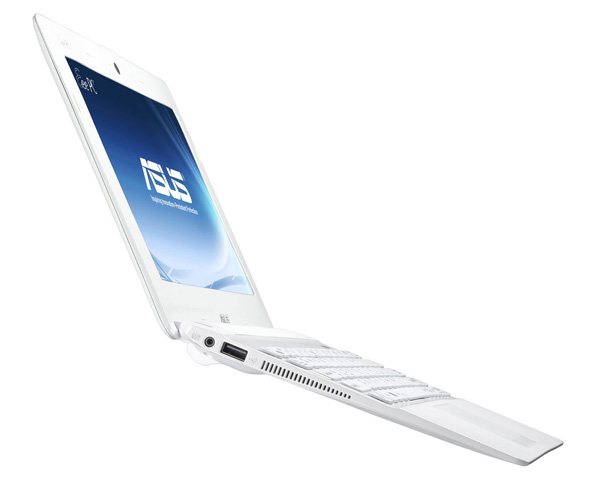
Asus X101CH has a wing like design
The Samsung NC110 is a much more accomplished machine when it comes to hardware. It comes with an Atom N550 processor and integrated Intel graphics, as well as an impressive 10 hour battery. No wonder it’s thicker than the X101, namely around 0.97 inches, but offers way better performances. Also, it comes with Windows 7 Starter and has 250 GB of HDD storage. Prices are also a bit higher, but you can still find this one for around $270.
The Acer Aspire One D255 comes with a dual core, Atom N550 Atom chip and 1 GB of RAM, as well as having two installed OS: Android 2.0 and Windows 7 Starter. True, having Android 2.0 is kind of obsolete, but it’s a nice alternative for those looking for some open source fun, including access to thousands of apps. The netbook is 24 mm thick and weighs 1.25 KG, which is a proper load for a decently spec-ed machine.
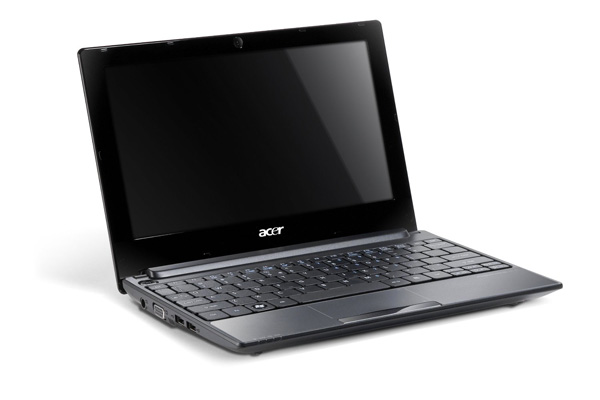
Acer Aspire One D255
The 24 mm thick AOD 257 is an upgrade of the AOD 255 and can be configured with a single core N455 or dual core N550/N570. But maybe the highlight is the lid, which comes with a rain drop like finish. The AOD 257 comes with either a 3 or 6 cell battery, with the latest making the device heavier, namely 1.3 KG, as opposed to the 3 cell battery, which weighs 100 grams less. Still, considering that the bigger battery offers double the autonomy, namely 8 hours, is a compromise worth making.
The thinnest mini laptops
Bigger mini laptops suffer from anorexia as well. There are a couple of very competitive, ultra thin laptops out there, but you should expect a hefty price tag. Still, there are some of the best mini laptops out there anyway, not just in terms of dimensions, as they pack some serious hardware.
And of course we’re winking at the new 11.6 inch MacBook Air, which has a starting price of $999, while the top version goes for $1199. The MBA is 0.68 inches thin, actually thinner than the 10 inch netbooks we’ve talked about before, and comes with a Core i3 or Core i5 dual core processor, a 64 or 128 GB of SSD storage, up to 4 GB of memory and a widescreen LED display. So if you’re willing to pay top dollar for uncompromising performance and a full Apple experience, you can definitely break the piggy bank for this one.

11.6 inch MacBook Air
The Sony Vaio P was quite a hit a while back. Although it had some weird ( grotesquely so) design ideas, the Vaio P was and kind of is a decent ultra ultra portable mini laptop, packing an Intel processor, 2 GB of RAM, 256 SSD and a HD display, all this in a 0.78 inch, 1.5 pounds package. From what I gather, the series was not very successful, maybe because of the + 1000 bucks price tag, but was one of the first premium gadgets to come with a stylish ultra thin profile.
And, of course, Samsung’s 9 Series. The 11.6 inch version of Samsung’s duralium built mini laptop is 0.65 inches thick, weighs a little over 1.2 KG and is powered by a ULV Sandy Bridge processor. The hardware on this one sure tops netbooks, but is not something to consider stellar. Even so, if you want this jewel of a laptop, you’ll have to spend more than a grand for it.

Samsung 9 Series
We haven’t forgot about Ultrabooks, most going for a sleek silhouette, averaging between 0.6 to 0.8 inches in thickness.
Like the MacBook Air and the Samsung above, ultrabooks pack solid hardware, good screens and decent keyboard-trackpads so they can actually replace an average laptop for the casual everyday user. However, they are pricey.
Devices like the Asus UX21 and UX31, Toshiba Z830, Acer Aspire S3, Lenovo U300S IdeaPad are just some of the ultrabooks you could consider. And if you’re looking for my monthly updated list of best ultrabooks available in stores, you can check it out via this link.
Final thoughts
As I see it, netbooks and mini laptops can’t take another route but towards the ultra thin. Tablets set a new standard when it comes to user experience and mobility, and the shaky mini laptop niche has to follow. There’s no doubt that hardware platform can be shrinked even more, that SSD will replace the good ol’ HDD for good and that under 1 inch profiles will be the new norm.
But, for now, ultra thin netbooks and mini laptops are tricky. They either have decent price tags, but modest hardware, like the X101CH, or pack strong processors and deliver good performance, like the MBA, but cost around $1000.
Of course, if you have anything to add or feel like we might have missed some good small laptops that should’ve been included in this list, don’t hesitate to post your comments below.

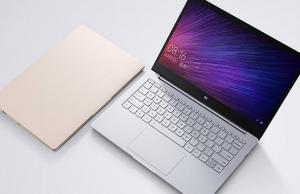
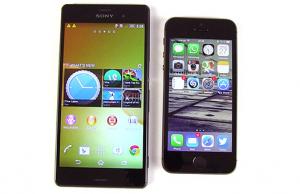
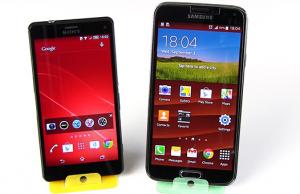









Anonymous
August 30, 2011 at 4:35 pm
What about the Toshiba Portege R835-P56x????? it has a lot of the same hardware as a macbook air (less SSD) for a fraction of the price. Amazon just had a combo deal where you got a free 100 printer and an Xbox 360, all that while it was priced at 699.99. Sell off the printer and xbox buy an SSD and you have a computer with specs very similar to the macbook air.
I used to like this site, but I can tell it has fallen behind…
“We haven’t forgot about Ultrabooks, it’s just none of them are officially out….” LIE
“But, for now, ultra thin netbooks and mini laptops are tricky.
They either have decent price tags, but modest hardware, like the X101,
or pack strong processors and deliver good performance, like the MBA,
but cost over $1000…” LIE
Mike
August 30, 2011 at 8:49 pm
Why Lies? Are there any ultrabooks on the market? Thin, fast and priced under $1000. Correct me if I’m wrong, but there aren’t…
The Portege and all the other “thin and light” 13 inchers, like the U36SD, Vaio SB or Aspire 3830TG can’t really be called ultrabooks. Or mini laptops for that matter… So they have no place in this post that speaks only about devices in the 10 to 12 inch classes.
proctosollare
April 10, 2012 at 4:33 pm
Well, if we would apply rules that are common to most markets, there will be a polarisation of the market, e.g. the mobile element will drive towards the extreme part of mobile. An example of this is smart phones and iPad. On the other extreme we will have the need for power. The middle segment will slowly disappear. My most sincere compliments for your right forward style and, at least in my opinion, balanced opinions! Congratulations Mike and the rest of the blog members. If you guys ever need to confront on any strategy issues pls feel free.
Andrei Girbea
April 14, 2012 at 11:15 am
Thanks for the kind words 😉